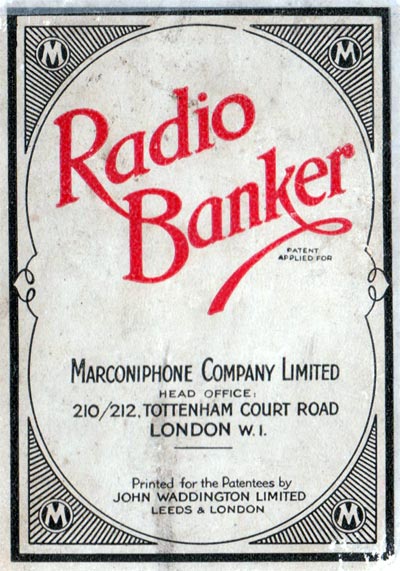Radio Banker
Radio Banker by John Waddington Ltd for Marconiphone Co Ltd.
Radio Banker by John Waddington Ltd for Marconiphone Co Ltd, c.1930. The pack is divided into two sets of cards, one used by the Banker (16 cards with photograph of Marconi House London) representing a number of broadcasting stations, the other by the players (37 cards depicting various types of Marconiphones and names of UK cities) representing wireless receivers of varying power located at different distances from broadcasting stations. The object of the game is for players to stake upon their chance of receiving the Broadcast Station turned up by the Banker. See the Rules►
Broadcasting Stations (Banker)
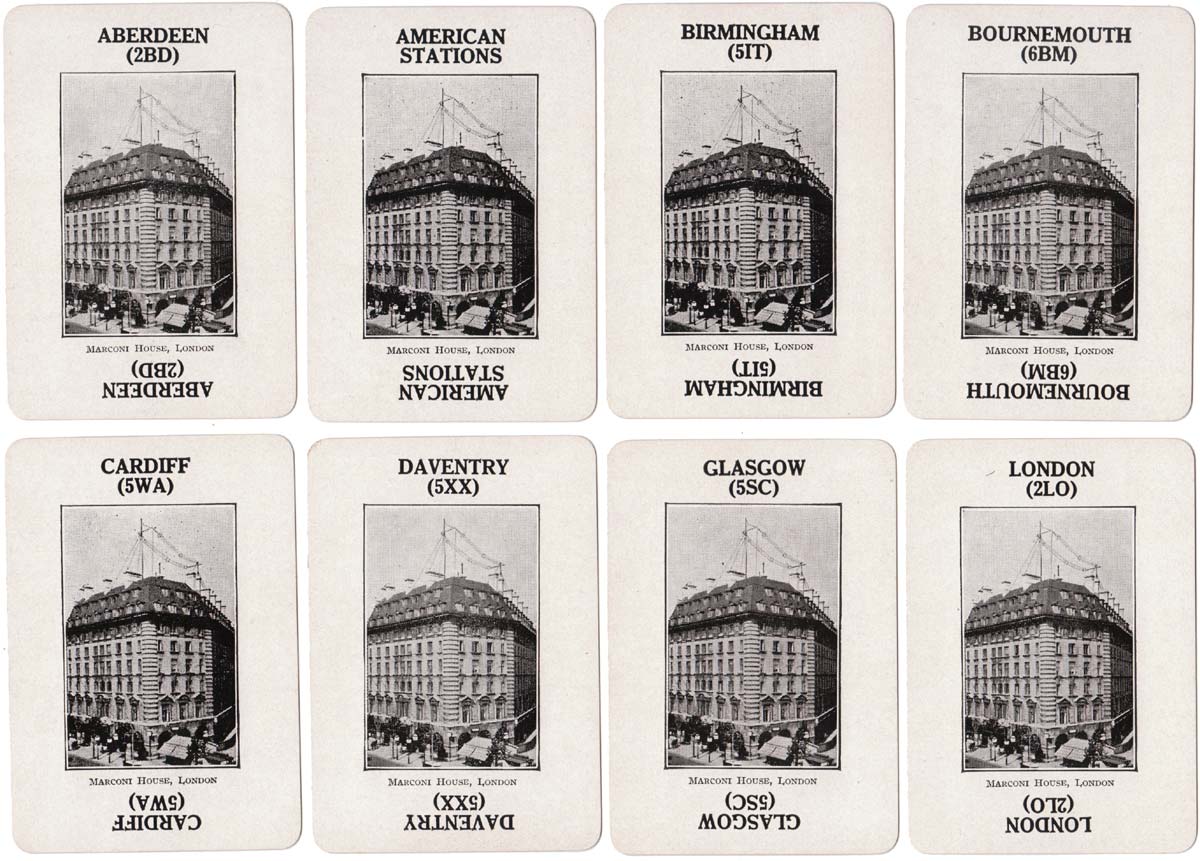
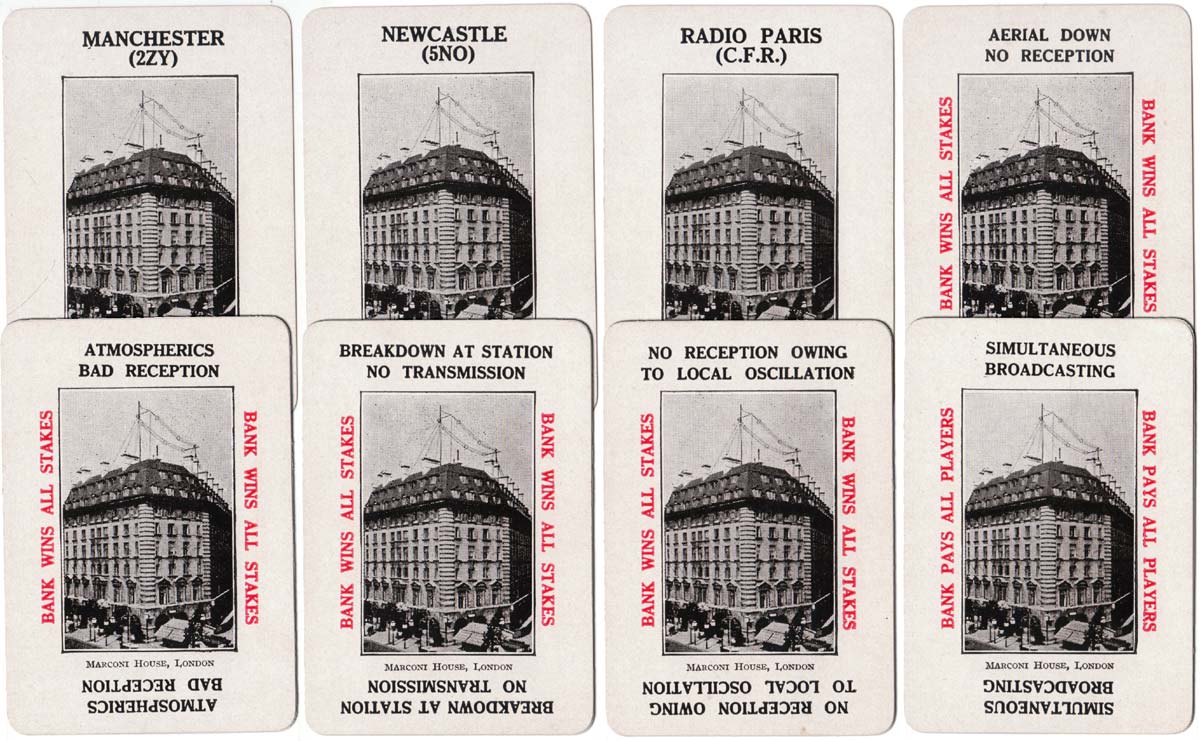
Wireless Receivers (Players)
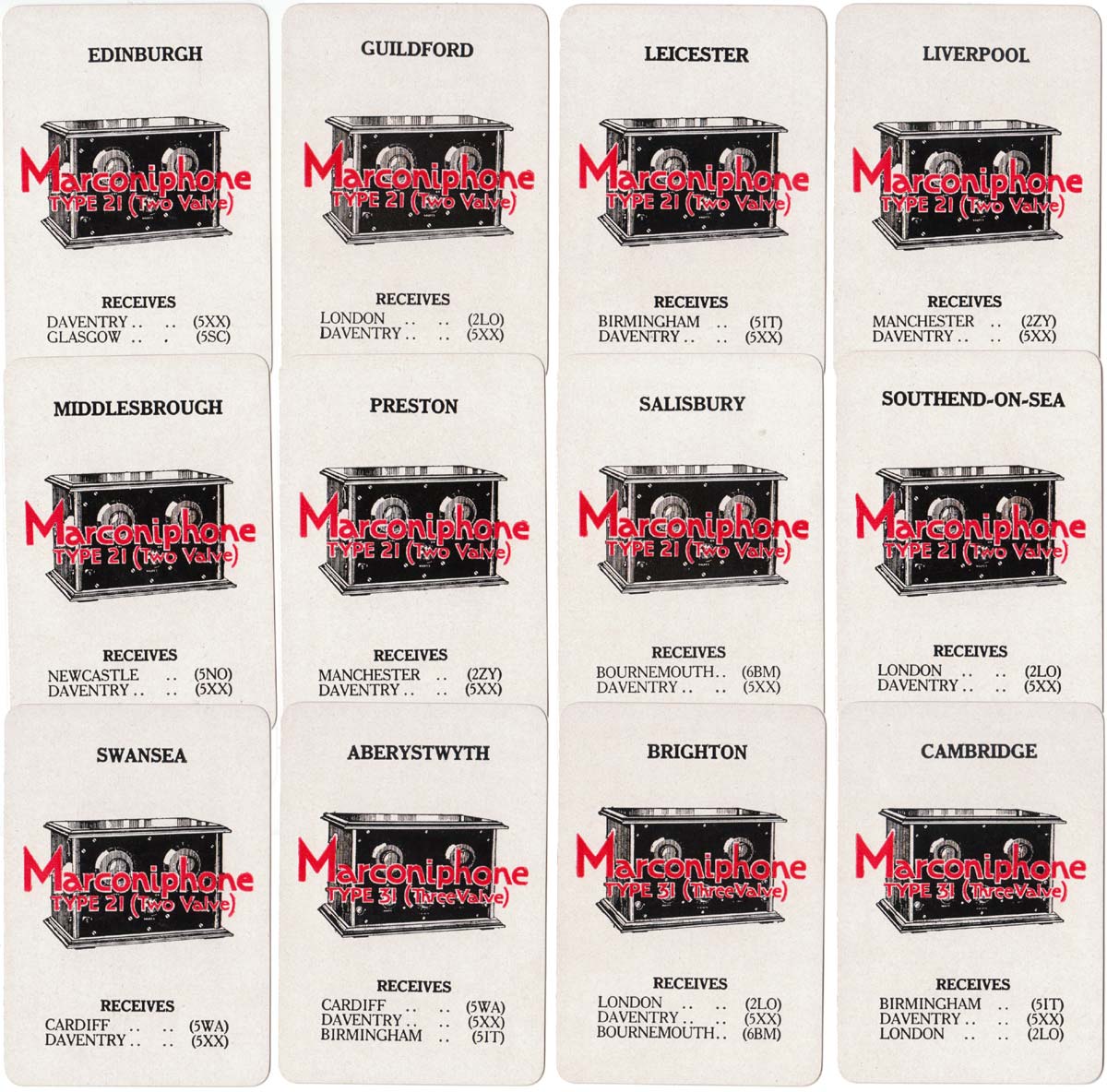
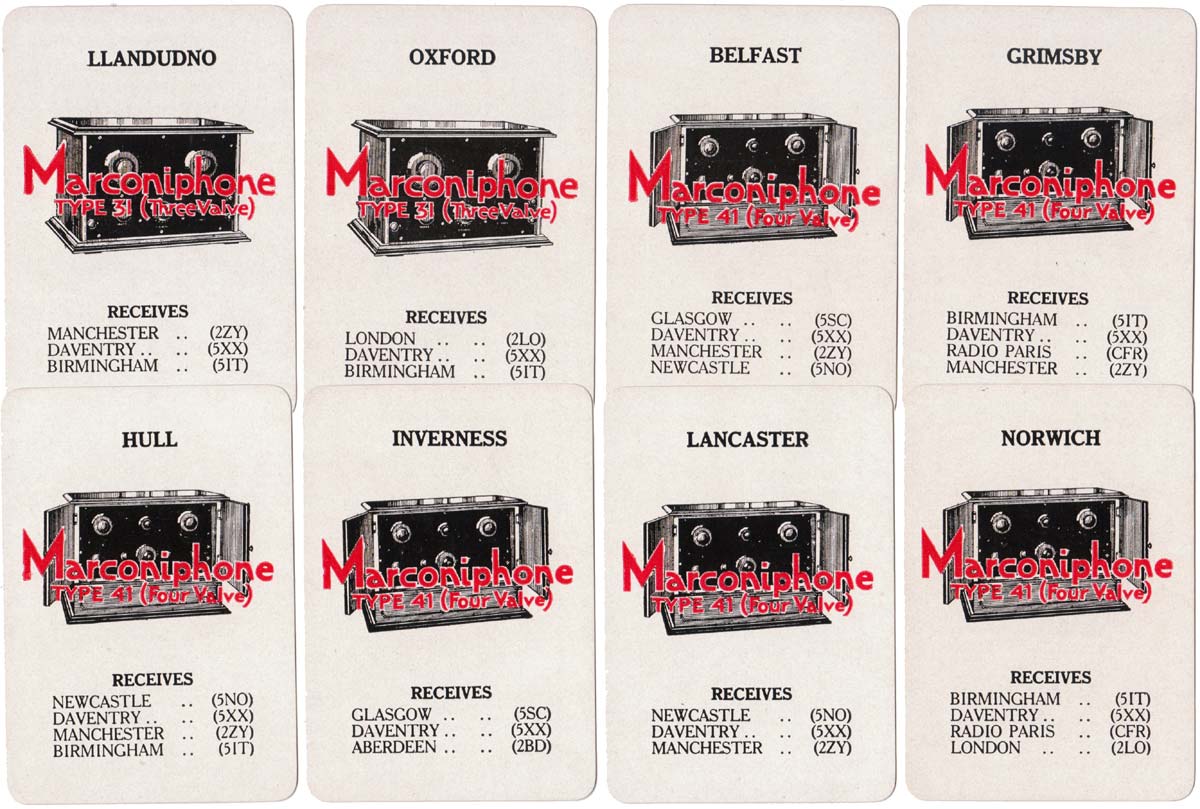
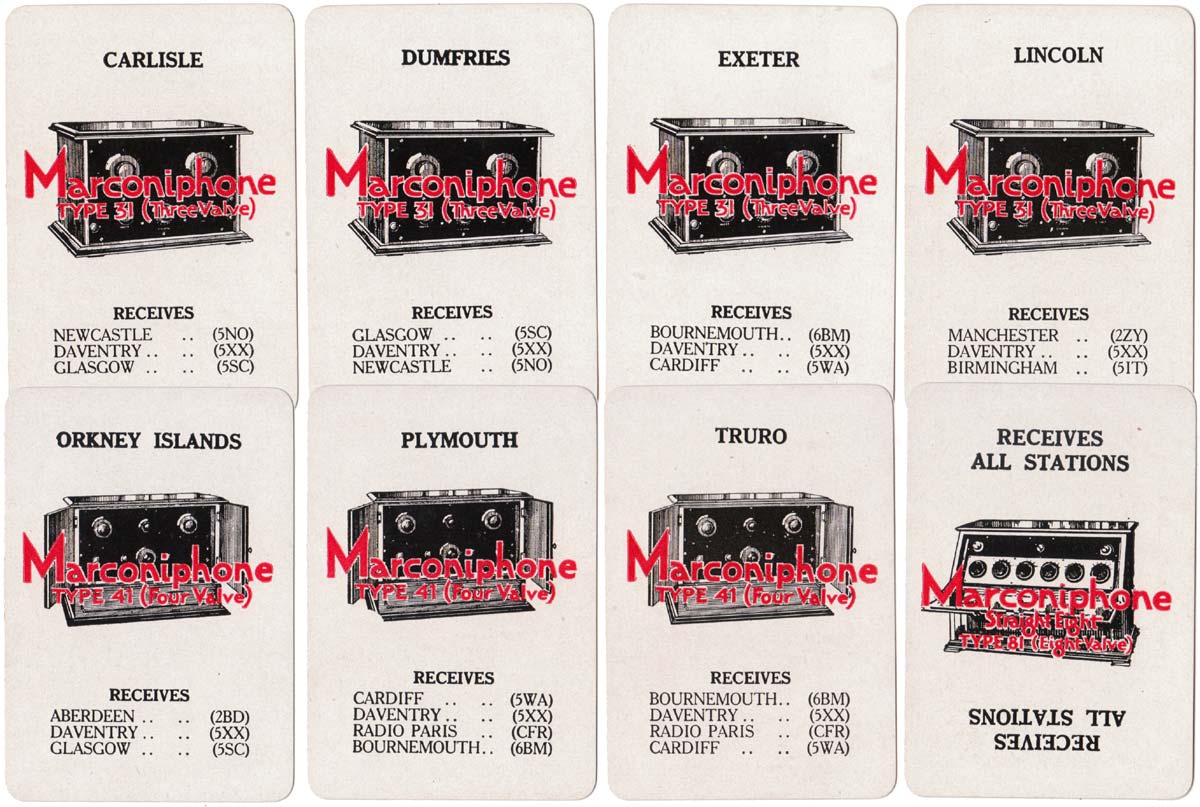
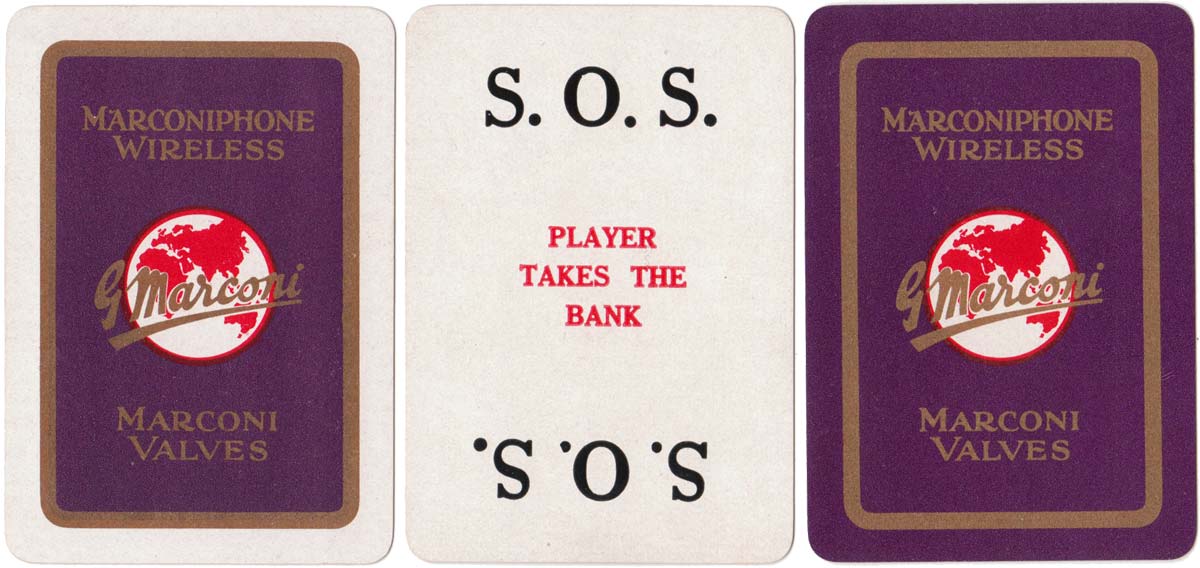
Above: Radio Banker by John Waddington Ltd for Marconiphone Co Ltd, estimated date late 1920s or c.1930. 53 cards plus 1 blank card in box + rules. The purple bordered cards are the 16 Banker cards, the white bordered those of the players. Note: Marconiphone wireless sets came into use from 1925.
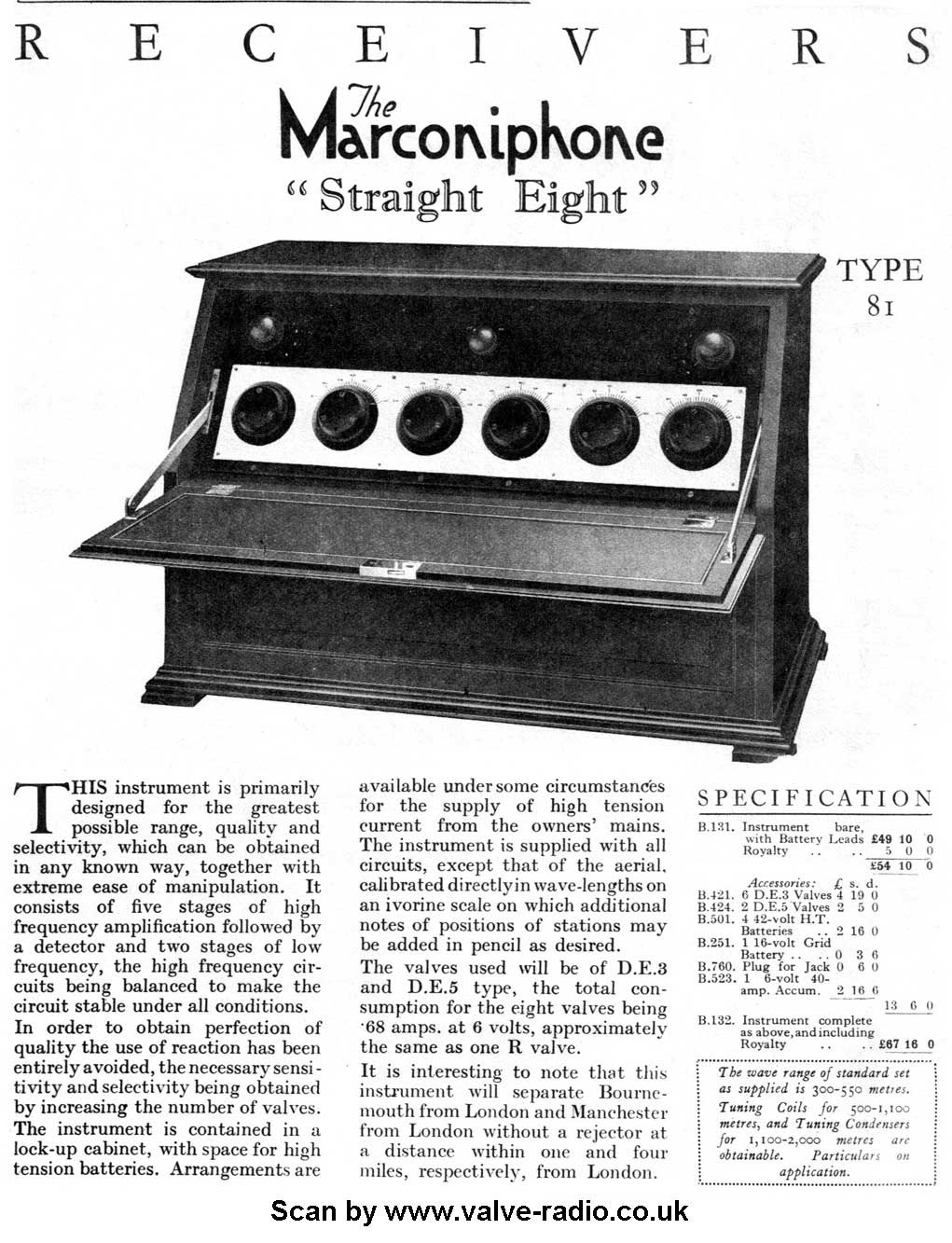
By Rex Pitts (1940-2021)
United Kingdom • Member since January 30, 2009
Rex's main interest was in card games, because, he said, they were cheap and easy to get hold of in his early days of collecting. He is well known for his extensive knowledge of Pepys games and his book is on the bookshelves of many.
His other interest was non-standard playing cards. He also had collections of sheet music, music CDs, models of London buses, London Transport timetables and maps and other objects that intrigued him.
Rex had a chequered career at school. He was expelled twice, on one occasion for smoking! Despite this he trained as a radio engineer and worked for the BBC in the World Service.
Later he moved into sales and worked for a firm that made all kinds of packaging, a job he enjoyed until his retirement. He became an expert on boxes and would always investigate those that held his cards. He could always recognize a box made for Pepys, which were the same as those of Alf Cooke’s Universal Playing Card Company, who printed the card games. This interest changed into an ability to make and mend boxes, which he did with great dexterity. He loved this kind of handicraft work.
His dexterity of hand and eye soon led to his making card games of his own design. He spent hours and hours carefully cutting them out and colouring them by hand.

Related Articles
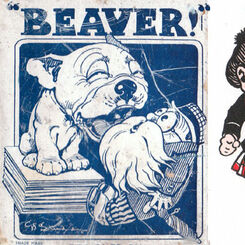
Beaver!
The Game of Beaver designed by G E Studdy and published by John Waddington Ltd in 1927.
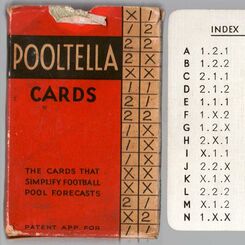
Pooltella
Pooltella cards by John Waddington Ltd, the cards that simplify football pool forecasts, 1930s.
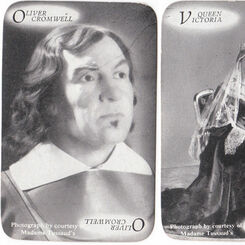
Have A Go
Have A Go card game published by Photo-Briton Ltd featuring photographs of waxwork figures from Mada...
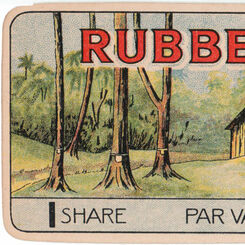
On Spec
“On Spec” is a round game based on selling stocks and shares, published by John Jaques & Son, c.1920...
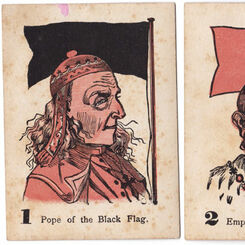
Four Flags
The Game of Four Flags published by Multum in Parvo, 1884
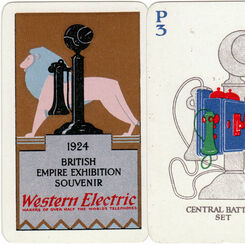
Electrical Mah Jong
Electrical Mah Jong was produced by De La Rue for The Western Electric Company Ltd in 1924 for the W...
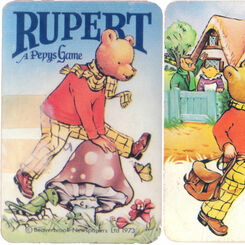
Rupert
Rupert, a Pepys Game, 1973.
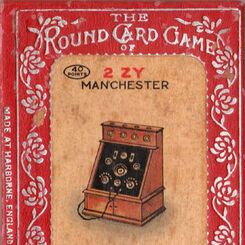
Sparx
‘Sparx’ card game, or ‘Listening In’, published by Chad Valley Games, c.1925.
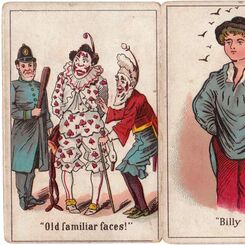
Anonymous Snap game
Anonymous “Snap” game from the late 19th century.
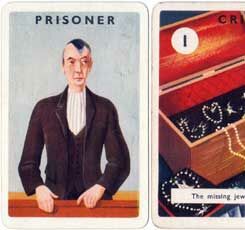
Alibi
“Alibi” the thrilling card game by Haytor, Tor Productions, 1930s.
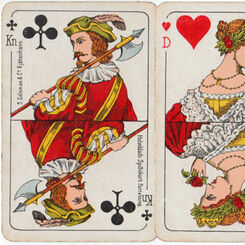
S. Salomon & Co Nr.154
Nr.154 Holmblads made by John Waddington Ltd specially for S. Salomon & Co., Copenhagen
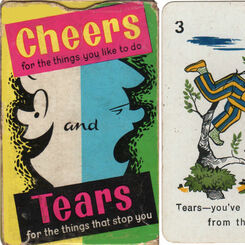
Cheers & Tears
Cheers & Tears by John Waddington Ltd, 1963.
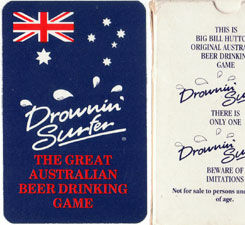
Drownin’ Surfer
Drownin’ Surfer card game
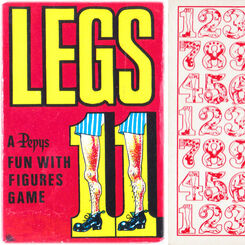
Legs Eleven
Legs Eleven card game by Pepys, 1974.
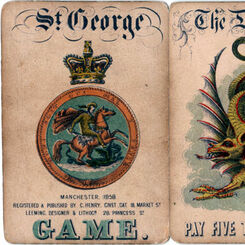
St George Game
St George Game, 1858, depicting St George and other saints engaged in battle slaying the dragon to s...
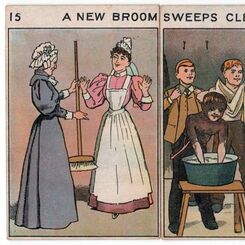
Picture Proverbs
Picture Proverbs was a Victorian card game illustrating popular proverbs which were seen as words of...
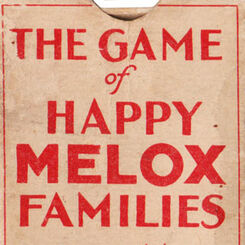
Happy Melox Families
The “Game of Happy Melox Families” was published by G. Clarke & Son of Thomas Street, London, in 192...
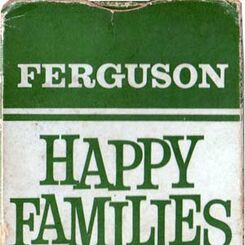
Ferguson Happy Families
Ferguson Happy Families card game was produced by Ferguson Electronics and printed by John Waddingto...
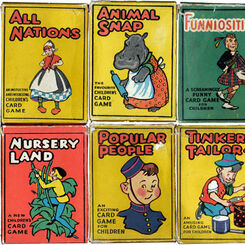
Waddy Productions
Waddy Productions Ltd was a member of the giant Amalgamated Press group and only published card game...

Caught in a Trap
A Victorian card game telling a story of a victim being ensnared in a trap, being caught, and finall...
Most Popular
Our top articles from the past 60 days


